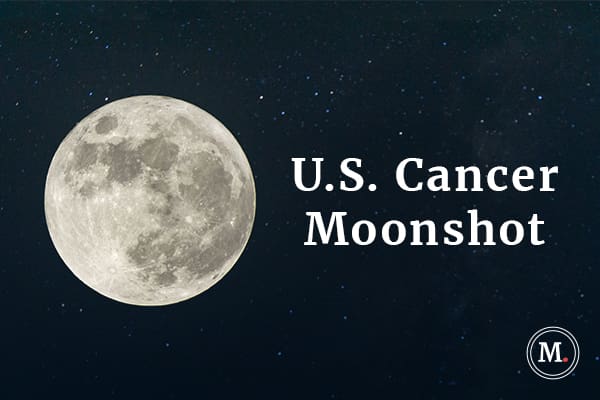
President Barack Obama signed the 21st Century Cures Act into law in December 2016. The law launched a massive commitment to cancer research. This program was dubbed the Cancer Moonshot℠, a callback to the Apollo 11 mission that put a man on the moon.
The original program provided $1.8 billion in cancer research funds over a 7-year period. 2023 was slated to be the last year of funding. However, President Joe Biden recently renewed the country’s commitment to the Cancer Moonshot.
The Cancer Moonshot now has two main goals:
- To reduce the cancer death rate by at least 50% over the next 25 years
- To improve the experience and lives of people with cancer, their families and cancer survivors
The program’s ambitious goals could help patients with any type of cancer, including mesothelioma. With such lofty aspirations, Moonshot seems a worthy name for the program.
What Has the Moonshot Accomplished?
Since the 2016 launch, the Moonshot has supported more than 70 programs and over 250 research projects. Each supported vital areas of the Moonshot initiative. Several of these programs have the potential to impact mesothelioma patients. In fact, the Moonshot’s top 3 achievements may already be helping.
1. Moonshot Boosted Immunotherapy Gains
The Cancer Moonshot is helping expand immunotherapy’s benefits. It has also allowed researchers to easily share data and insights across long distances.
For example, the Moonshot helped establish two networks to exchange information. These networks help researchers identify immunotherapy’s effects on many types of cancer. These insights may one day help boost the effectiveness of mesothelioma immunotherapy.
2. Moonshot Improved Cancer Data Sharing
The Moonshot developed a central resource for collecting and sharing data about cancer. The Cancer Research Data Commons (CRDC) allows researchers to:
- Access large amounts of cancer research data
- Add new data to the CRDC
- Analyze CRDC data with powerful cloud computing tools
Eventually, researchers will add more data that may help speed up cancer research. This data expansion may help mesothelioma researchers find new methods to treat mesothelioma.
3. Moonshot Increased Collaboration and Communication
The Cancer Moonshot focused on boosting collaboration and communication. Developing spaces for researchers to share ideas can help create a community. That community can do more research together than as individuals. As such, collaboration can help move cancer research forward.
With so few mesothelioma doctors spread out across the country, a community like this may advance mesothelioma research more quickly. It could also improve the patient experience. This easy collaboration could help oncologists without experience in mesothelioma. They could use the community’s expertise to cut down on delays in diagnosis or treatment planning.
What Does the Reinvestment in the Moonshot Mean?
In February 2022, President Biden announced new leadership resources for the Moonshot program. These include a White House Cancer Moonshot coordinator and a Cancer Cabinet. Alongside these resources, the Moonshot now has two ambitious new goals:
- To reduce the death rate of cancer by at least 50% over the next 25 years
- To improve the experience of people and their families living with or surviving cancer
When the 21st Century Cures Act passed in 2016, Congress allocated $1.8 billion over 7 years to fund the program. The Moonshot should get $216 million in 2023, its last year of funding.
The Moonshot will use these funds and focus on 7 areas:
- Addressing inequities across patient populations
- Diagnosing cancer sooner
- Ensuring the right treatments get to the patients who need it
- Learning from all patients by asking them to share data
- Preventing cancer
- Streamlining the treatment development process to better fight the most deadly and rare cancers
- Supporting patients, caregivers and survivors
As the Mesothelioma Applied Research Foundation noted, “It’s not just about designing the cures, but also about delivering them to ultimately make a difference.”




